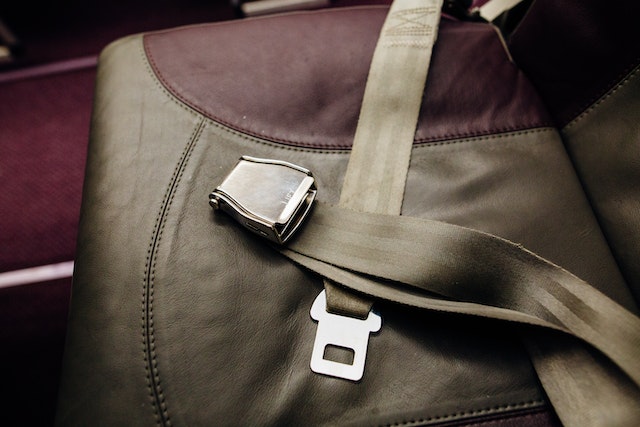The Importance of Seatbelt Repair
Seat belts are not just a safety precaution; they can be the difference between life and death in an accident. They are essential for getting to work, picking kids up from school, running errands, and spending time with family.
But, over time, seat belts can stretch and become damaged from collisions, causing them to stop working correctly.
Contents
Damaged Seatbelts
Seat belts are designed to restrain you in a car accident. They stop your body from slamming into the steering wheel or dashboard and prevent you from being thrown from your vehicle. These lifesaving devices can prevent catastrophic injuries, like neck and spinal cord injuries that can cause quadriplegia, paraplegia, or even death.
It’s essential to regularly inspect your seatbelts, especially after a significant collision or any time you notice a change in how your seatbelts function. If a seat belt is damaged, it should be repaired or replaced immediately.
Many different factors can cause damage to seatbelts. Some common issues include retractor failure, false latching, weakened webbing, and poor seat belt geometry.
Let a qualified specialist, like Safety Restore, handle the seat belt repair despite your temptation. In the event of an accident, DIY seat belt repair attempts may result in even more severe injuries, and insurance companies may undervalue your damage claim.
Locked Seatbelts
A seatbelt that won’t release, especially after an accident, is a serious safety risk. It can prevent a quick exit from the vehicle and increase injury risk. The issue often lies within the seatbelt retractor — the mechanism that locks the belt during sudden stops.
Over time, debris like grease, sand, or dirt can clog the retractor housing, causing it to jam. These particles interfere with the internal parts, preventing smooth operation. It’s crucial to address this problem immediately to ensure your seatbelt functions properly in an emergency.
This is particularly common in vehicles frequently exposed to outdoor elements or food spills. To resolve the issue, start by cleaning the retractor area, removing any debris. Gently pull the seatbelt to see if the mechanism resets. If the issue persists, an OEM seatbelt retractor fix becomes necessary.
“OEM” refers to Original Equipment Manufacturer parts, meaning the replacement retractor will be exactly the same as the original one installed in your vehicle. Using an OEM part ensures a perfect fit, restores functionality, and meets factory safety standards, ensuring your seatbelt operates as intended for maximum protection.
Weak Seatbelts
Seatbelts are designed to distribute the force of an accident across your body’s most vital points, like your hips and shoulders, preventing injuries and reducing the severity of injuries. But they can do more harm than good if they don’t work correctly.
Weak seat belts are often caused by dirt and filth accumulating on the polyester fabric of the belt (also known as “webbing”). When this occurs, the webbing can become stiff and rigid, which makes it difficult for the retracting mechanism to pull in. The plastic loop that holds the webbing over your shoulder can also start to jam.
To fix this problem, manually feed your seatbelt back into its retractor to create slack. Then, use a spray can of lubricant to coat the webbing with a thin layer of grease. Once done, you can easily pull your seatbelt, and the plastic loop should no longer jam. This quick fix can save you from purchasing a new retractor and seatbelt! You run the danger of suffering severe injuries or passing away if your seatbelt isn’t functioning correctly.
Damaged Seatbelt Tensioners
Seat belt tensioners work to tighten your seat belt in a car accident. They must be working correctly to help protect you and your passengers. If your seat belt tensioner is damaged, it must be repaired or replaced.
You can usually tell if the tensioner is damaged because it will stop retracting when you remove your seat belt. It will also be stiff or feel loose when you buckle up. If your seat belt isn’t functioning correctly, it could cause serious injuries or even death in the event of a car crash.
A faulty seat belt tensioner can also lead to a weak webbing that could break in an accident. It is why it’s crucial to inspect your seat belts regularly for any signs of damage or wear and tear.
Although you might be tempted to fix your seat belt pre-tensioner to save money, it’s best left to the professionals. Tapping into or tampering with this safety feature can void your warranty and make your seat belts less effective.
Damaged Webbing
A seat belt is a vital safety feature of your vehicle. It protects you and your passengers from severe injuries in a car accident. Unfortunately, it isn’t always the case that every driver wears a seat belt. Those who aren’t buckled up may be at a higher risk for fatal accidents than those who wear seat belts correctly.
The webbing of a seat belt is made from high-strength materials and designed to withstand significant forces in a collision. However, a seat belt can be damaged over time due to age, extreme weather conditions, dirt, and other factors.
If a seat belt webbing is damaged, it can cause injuries to the occupants of a vehicle in the event of a crash. Moreover, it would be best to have them repaired immediately by an expert to reduce the risk of injury. It’s also important to instill the proper seat belt buckling habits in your children and remind them always to buckle up when riding in your car.

